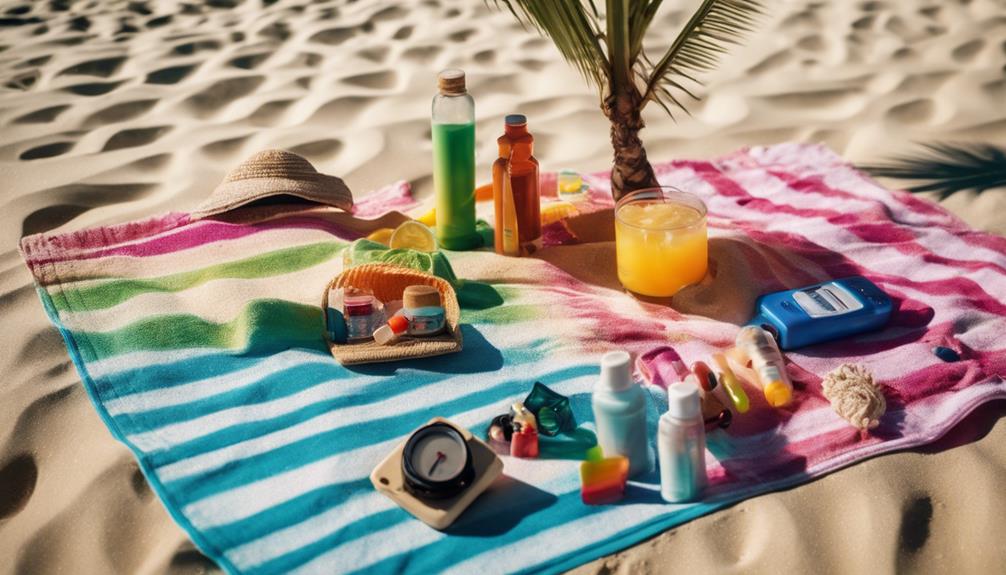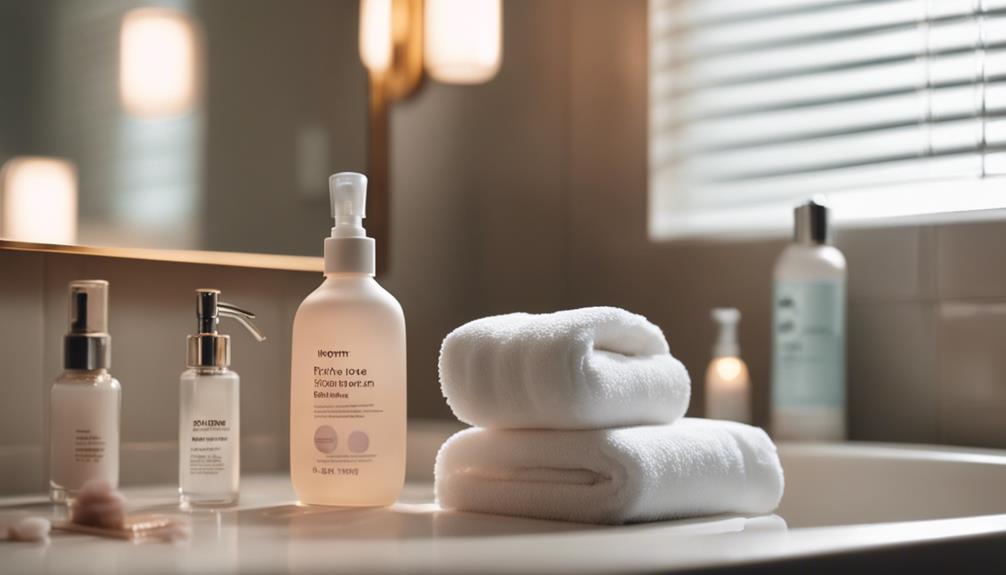Tanning may not be an effective method to burn calories; it’s essentially just sunbathing, which provides minimal metabolic advantages. Simply because you’re sweating doesn’t necessarily mean you’re shedding pounds, as that’s mainly your body’s way of cooling off, not specifically getting rid of fat. Your basal metabolic rate remains the same even without any physical activity, so don’t anticipate significant weight loss by just laying out in the sun. If you’re looking to burn calories, engaging in activities such as jogging, swimming, or playing beach volleyball would be more effective. Stick around, and you’ll learn more about the misconceptions related to tanning and effective strategies to reach your fitness objectives!
Key Takeaways
- Tanning does not significantly increase calorie burn; it primarily enhances skin appearance.
- Sweating during tanning is a cooling mechanism, not an indicator of fat loss.
- Real calorie burning requires physical activities like jogging, swimming, or cycling.
- Tanning poses health risks, including skin cancer and accelerated aging.
Understanding Caloric Burn
When it comes to understanding caloric burn, it's important to know that simply lying in the sun won't help you shed those extra pounds. Tanning doesn't considerably increase your calorie expenditure. Additionally, spending time in the sun can be risky for your skin and increase your risk of skin cancer. However, if you still want to get that sun-kissed glow, there are expert tanning tips that can help you achieve a bronzed look safely. Using sunscreen, staying hydrated, and limiting your time in the sun are just a few of the expert tanning tips that can help you protect your skin while still getting a radiant tan.
While you might sweat under the sun, that's just your body's way of cooling itself, not a sign of burning fat. Your basal metabolic rate stays constant, meaning you need to move to boost calorie burn.
If you're serious about weight loss, you'll need to engage in physical activities like jogging, swimming, or playing sports. Remember, real results come from active movement, not sunbathing.
The Tanning Process

Tanning involves exposure to UV light, which stimulates the production of vitamin D in your body, but it doesn't greatly contribute to calorie burning. While you might enjoy the sun, remember that the primary benefit is skin appearance enhancement, not weight loss. Here's a quick look at the tanning process:
| Aspect | Details | Impact on Calories |
|---|---|---|
| UV Light | Stimulates vitamin D production | Minimal calorie burn |
| Skin Appearance | Enhances tan and look | No effect on weight loss |
| Sweating | Cooling mechanism | Not indicative of fat loss |
| Movement Required | Necessary for calorie burning | Laying still does little |
| Risks | Skin damage and cancer potential | Not linked to calorie burn |
Focus on active pursuits for effective calorie burning instead!
Health Risks of Tanning
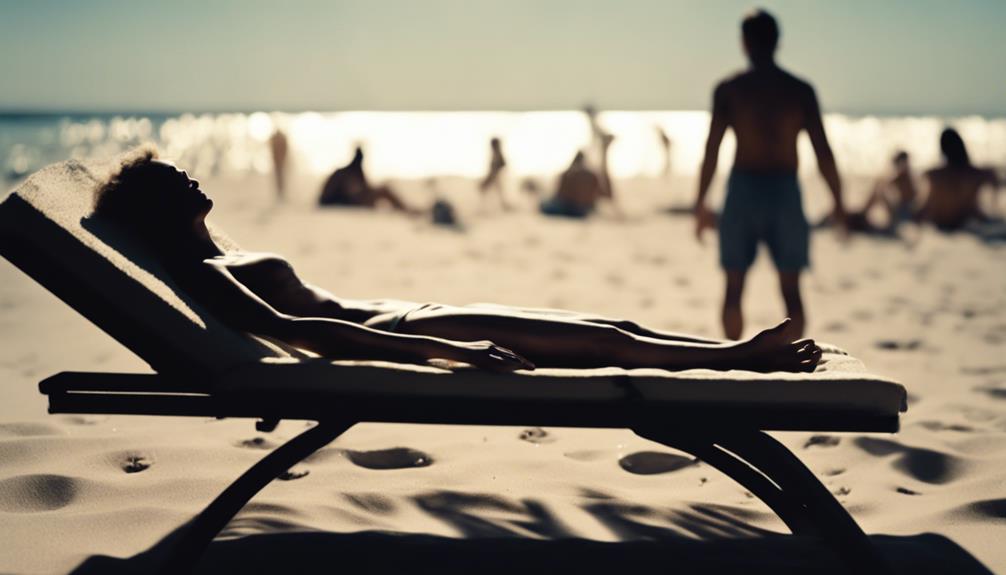
Many people underestimate the health risks associated with tanning, which can lead to serious consequences like skin cancer and premature aging.
When you expose your skin to UV rays, you're increasing your risk of developing melanoma and other skin cancers. This exposure also accelerates skin aging, causing wrinkles, sun spots, and a leathery texture.
You mightn't realize that tanning can damage your eyes, too, potentially leading to issues like cataracts. Additionally, overexposure to the sun can suppress your immune system, making you more vulnerable to infections.
While some sun exposure is beneficial for vitamin D production, it's essential to be aware of these risks and take necessary precautions to protect your health while enjoying the sun.
Safe Tanning Practices

To enjoy the sun safely, always apply broad-spectrum sunscreen with an SPF of 30 or higher before heading outdoors. Reapply every two hours, especially after swimming or sweating. Limiting your sun exposure to 15 minutes daily can markedly reduce your risk of skin cancer while still allowing you to enjoy the benefits of sunlight.
Here's a quick reference table for safe tanning practices:
| Practice | Description |
|---|---|
| Use Sunscreen | Apply SPF 30+ before sun exposure |
| Reapply | Every two hours or after swimming |
| Limit Exposure | 15 minutes daily for safety |
| Consider Alternatives | Self-tanners or sprays for a safer glow |
| Engage in Activity | Combine outdoor fun with sun enjoyment |
Effective Calorie Burning Activities
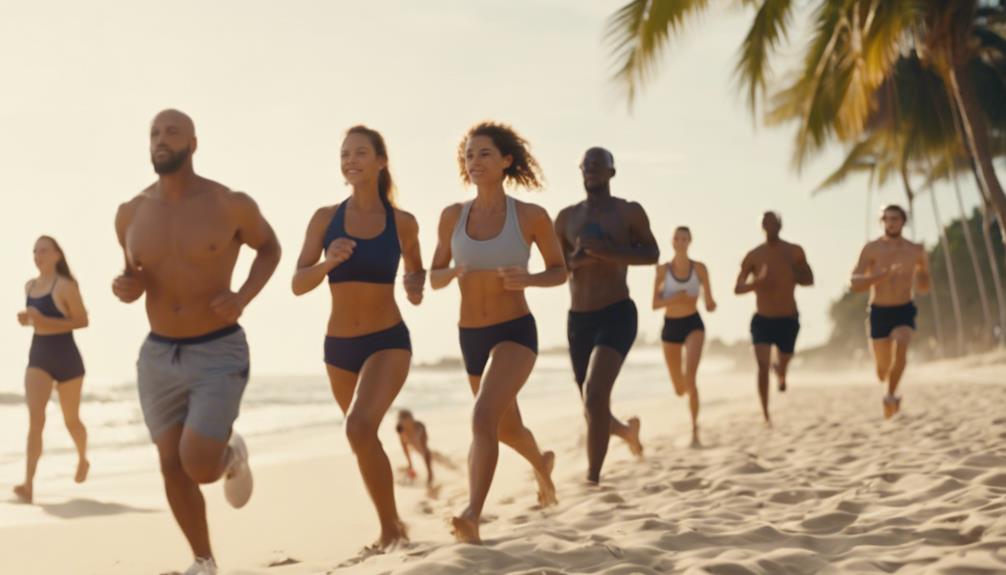
Engaging in activities like beach volleyball, swimming, or cycling can greatly boost your calorie burn while enjoying the outdoors.
These fun workouts not only help you shed calories but also enhance your overall fitness. Here are three effective calorie-burning activities you should consider:
- Beach Volleyball: This high-energy sport engages multiple muscle groups and can burn up to 500 calories per hour.
- Swimming: Depending on your intensity, swimming can burn between 400 to 700 calories per hour while providing a full-body workout.
- Cycling: Riding a bike at a moderate pace can help you burn around 300-600 calories per hour, depending on your speed and terrain.
Pair these activities with a balanced diet for ideal weight loss results!
Misconceptions About Tanning
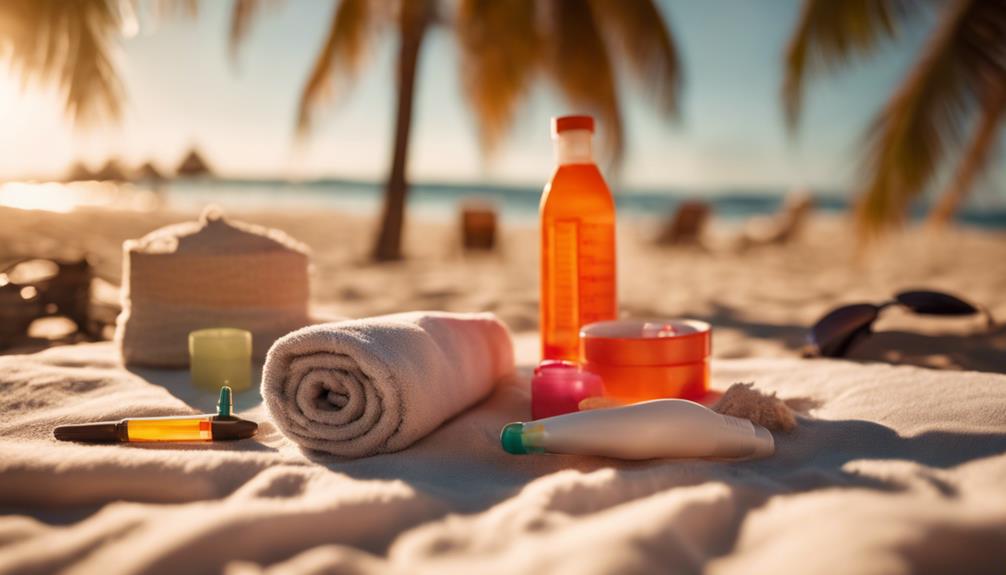
Tanning isn't an effective way to burn calories, despite what some might believe. Many think that basking in the sun or lying in a tanning bed can help them shed pounds, but that's a misconception.
The reality is that your body burns very few calories while tanning. Sweating doesn't mean you're losing fat; it's just your body's way of cooling down. You won't see any significant changes in your metabolism or belly fat by simply sunbathing.
Real weight loss requires movement and activity, not passive exposure to sunlight. So, if you're looking to burn calories, ditch the sunbathing and opt for exercises that get your heart pumping instead.
It's the active lifestyle that truly makes a difference.
Trending Topics in Tanning

A variety of trending topics in tanning are capturing attention, from proper tanning bed hygiene to the best protective goggles for your eyes. Staying informed can enhance your tanning experience while ensuring safety. Here are three key topics to evaluate:
- Tanning Bed Hygiene: Regularly clean and disinfect tanning beds to prevent skin infections and maintain a healthy environment.
- Protective Goggles: Invest in high-quality goggles to shield your eyes from harmful UV rays during tanning sessions.
- Skin Preparation: Properly exfoliate and moisturize your skin before tanning to achieve an even tan and minimize damage.
Frequently Asked Questions
Can Tanning Beds Help With Mood Enhancement?
Tanning beds can boost your mood by mimicking sunlight exposure, which may increase serotonin levels. However, moderation's key; excessive use can lead to skin damage and other health risks, so be cautious while enjoying those benefits.
How Does Tanning Affect Skin Hydration Levels?
Tanning can lead to dry skin since UV exposure damages skin cells. You might notice dehydration, so moisturizing regularly is essential. Always hydrate before and after tanning to maintain your skin's health and moisture levels.
Are There Any Benefits of Tanning for Acne Treatment?
You might think tanning clears up acne, but it only temporarily masks it. Instead, consider using targeted treatments or consult a dermatologist for effective, long-lasting solutions that truly address your skin concerns without harmful side effects.
Can Indoor Tanning Provide the Same Vitamin D Benefits?
Indoor tanning can provide some vitamin D benefits, but it's not as effective as natural sunlight. You should consider safer alternatives like supplements or moderate sun exposure for ideal health without the risks of UV damage.
What Is the History of Tanning Practices Through the Years?
Imagine ancient Romans basking in the sun, seeking bronze skin. Over centuries, cultures embraced tanning for beauty and health, evolving from sun worship to modern self-tanners, reflecting changing aesthetics and societal values around skin tone and sun exposure.
Conclusion
So, while you might dream of a bronzed glow helping you slim down, the reality is quite different.
Tanning may give your skin a sun-kissed look, but it won't torch those calories.
Instead of basking under the sun or in a tanning bed, think about hitting the gym or going for a run.
Your body craves movement, not just UV rays.
Embrace activities that truly boost your health while still enjoying the beauty of a tan—just not as your weight loss strategy!
